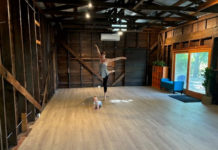Fires and community
In preparation for the photography exhibit at the Healdsburg Library, which features photos of the 2010 Post Office fire, I visited the Healdsburg Museum to research fires.
I should point out that my research was limited to the card catalog at the museum, which contains short references to occurrences and newspaper articles from the late 1800s to the 1920s or thereabouts. I didn’t go through the extensive microfilm rolls because that machine makes me dizzy.
I learned that, in the last part of the 19th Century and the first part of the 20th, fires were common. Buildings were made of wood and heated with fire, so accidents were inevitable. In that span of time, fires were noted in homes and farms, as well as barbershops, canneries, fruit dryers, packing houses, hotels, cigar stores, sawmills, brothels, wineries, churches, saloons and banks.
In 1891 a fire destroyed four downtown businesses, including the Wells Fargo office and the post office. Laundries burned regularly, especially Chinese laundries – and those fires were always suspicious. In 1913 a whole city block burned, destroying two newspaper offices, The Healdsburg Enterprise and The Healdsburg Tribune.
In 1919 a city block burned again. The fire started in Pruitt’s Theater and spread to Sunset Laundry, Healdsburg Auto Supply, Standard Machine Works, Wilson & Maher, a battery and ignition shop, A.W. Garrett and more.
As noted above, I did not research the middle of the 20th Century, but I know of or recall notable fires of the last couple of generations. The old hotels along the west side of downtown were known as “skid row” in the 1970s and fires broke out regularly, presumably caused by down and out residents starting indoor campfires to cook or keep warm.
With the exception of the Seghesio fire a few years back, lately when a significant commercial enterprise burns, it is not rebuilt. Old timers talk about the bowling alley that burned in the 1970s and how its loss changed the downtown.
A decade ago Fred Young Mortuary burned to the ground and never came back. That was a big change. After all, a mortuary might be the ultimate local-serving business. When a funeral service was held for a popular person, the whole downtown character changed for a couple of hours.
And, the Post Office burned. It was a bitter end for many of us, who had been fighting the Postal Service for years to keep the service downtown. Now it’s off in a business park and generates so many car trips every day that the city is changing the traffic pattern to accommodate it.
Why was it so important to try and keep the Post Office downtown? As many of us believe, it was more than a convenience. It brought residents downtown, who then patronized other businesses. It also served as a place to meet and greet. Some folks talk fondly about seeing the same acquaintances over and over at the post office. Others marvel at seeing people they had not seen in months. It was a place to gossip, exchange news and reinforce our feelings about each other and the community.
That probably still happens at the new post office, but not as much. Everyone’s in a car and in a hurry and the place feels different. But, we still need those “third place” experiences. The “third place” is commonly thought of as a place where you encounter old friends and make new ones outside the two most common places in your life, namely home and work.
Third places can grow and even anchor a community by creating opportunities for social interaction and enrichment. We find them in bars, coffee shops, dry cleaners, hardware stores, barber shops, hair salons, farmers markets, and of course libraries, these temples of freedom that are so important to a community.
◆
Did you get a cookie? The irrepressible T Barny marketing team handed out 600 special fortune cookies around town in preparation for a party last weekend. Alexander Valley resident T Barny is a world-renowned stone sculptor and is justly famous for how he renders a mobius form out of rare stone. Dubbing their annual sculpture garden party “The Year of the Mobius” the T Barny team went all out with Chinese-themed treats, entertainment and those cookies, each containing a tiny invite to the party.
◆
Miriam Lapin Seifer and Robert Michael Yablon met while working for Supreme Court Justice Ruth Bader Ginsburg. They were married last weekend at Barndiva in Healdsburg and Justice Ginsburg herself officiated at the wedding. Jil Hales of Barndiva reports that Justice Ginsburg was very articulate, with a soft, lilting voice. She wore a wool suit but put on a robe with a frilled collar for the ceremony. Jil emailed: “What you don’t get a sense of at all from pictures is how elegant a lady she is in person.”
◆
We all know where the animal shelter is located, but did you know we also have a shelter for homeless people? North County Community Services, affiliated with St. Paul’s, operates an overnight shelter for four, daily shower facilities for the homeless, and also manages Victory Apartments, a transitional housing facility near downtown. “God’s Work” is truly the only way to describe this remarkable effort.
NCCS deserves our support, and one way to do so is to attend the “Dinner in the Vineyards” fundraiser this Saturday at Hoot Owl Creek in the Alexander Valley. You haven’t seen the sunset until you’ve seen it from these lovely picnic grounds. Call 433-2107 or visit www.stpauls-healdsburg.org for ticket information.
Ray Holley believes in good works. He can be reached at ra*******@gm***.com.
47.6
F
Healdsburg
April 21, 2025







